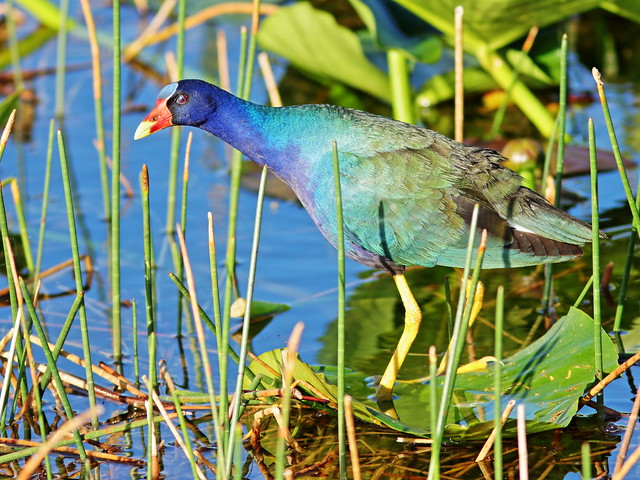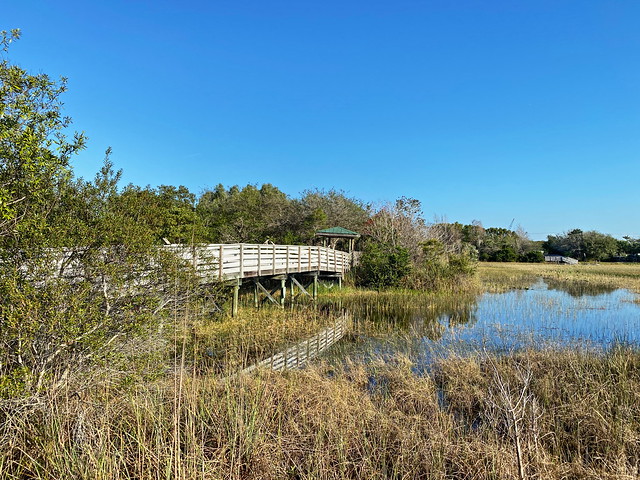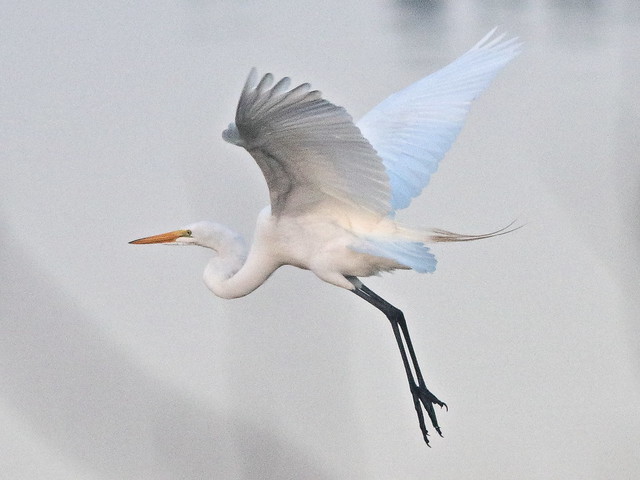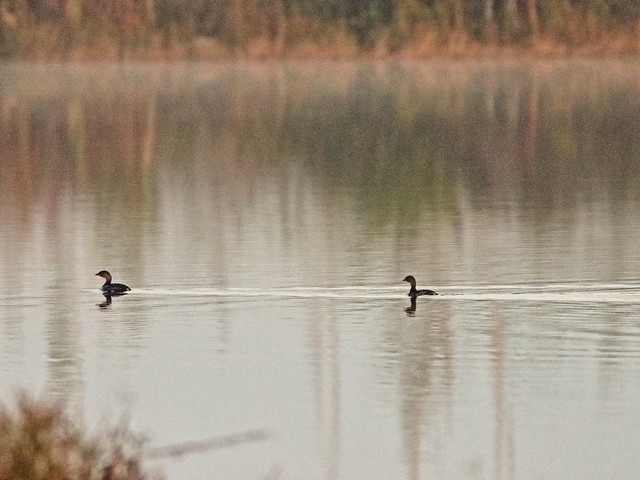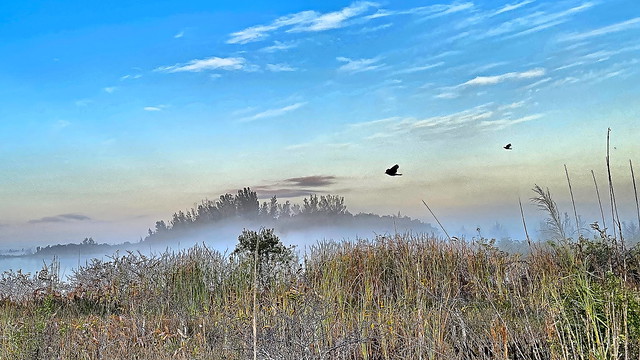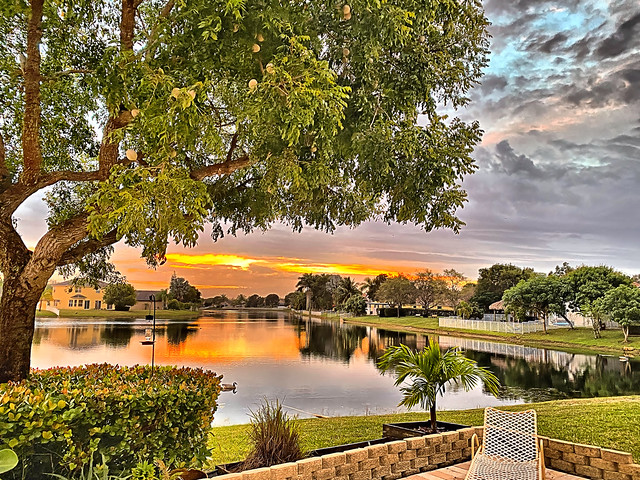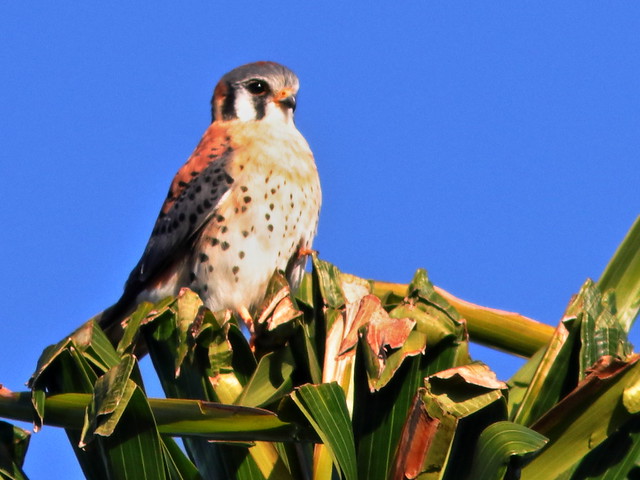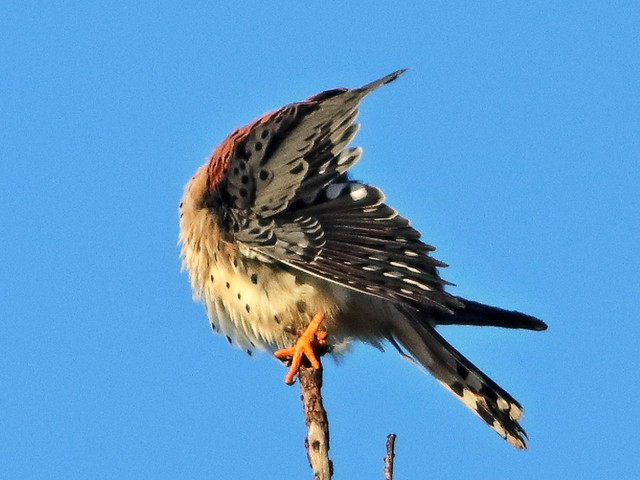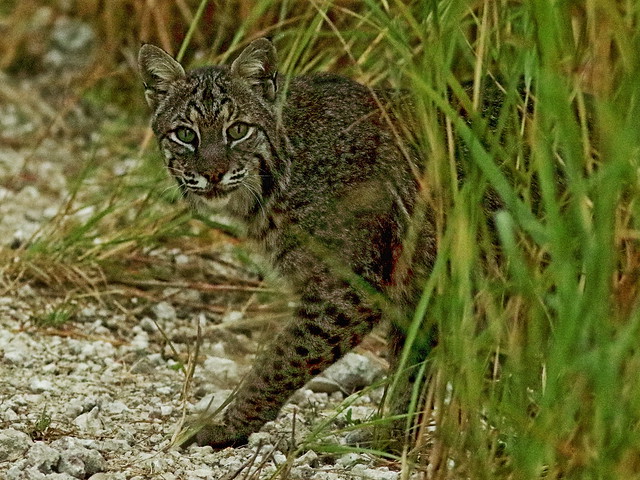I would be a terrible judge in a beauty contest. Selecting one bird or other critter over another is difficult. Its behavior can be as important as its appearance. While looking at it through my camera viewfinder, any creature is my favorite. Usually the photos do not do it justice. It is the same with skyscapes and sunrise images. Pixels do not seem to truly capture the subtleties of color and scope.
A male American Kestrel occupies a territory very close to our home. He may be the same one which has returned to this spot every winter for for 3 or more years. He generally roosts on top of the emerging leaf spire of a Royal Palm. He prefers to face into the wind, which can be a problem if this causes him to present only a back view.
However, the morning light and the soft easterly breeze worked together for these views:
Hidden beauty was revealed when he ruffled his feathers while preening:
At Chapel Trail preserve near our home, a male Anhinga roosted on a post:
A Tricolored Heron permitted me a close approach, too near the subject for my telescopic lens, so I put my iPhone to work:
The heron flew down to forage in the shallow water, barely fitting into the frame. I liked how its posture and suspended foot communicated the intensity of the hunt :
Looking down from the boardwalk I obtained top views of another Tricolored Heron. This perspective distorts the normal proportions of a bird. However, it did display the beauty of its emerging plumes:
As it moved away from the boardwalk, the effect of elevated aspect was reduced:
The Tricolored Heron flew over to the shore and was briefly joined by an adult Little Blue Heron:
Little Blue Herons have white plumage for their first year. This one shows a few emerging adult blue feathers:
Walking along the trail, I was startled to see a Bobcat staring at me from the edge of the track:
For a moment I thought the cat would move across in front of me, but it withdrew into the tall grass:
It had retreated into a well-worn path. I do not know whether the Bobcat and/or other mammals such as Raccoons, Opossums or Marsh Rabbits had created it:
Over a two month period the local pair of Bald Eagles worked together to build a large new nest.
One very long stick gave them trouble as they cooperated to move it up into the nest ("Heave-Ho!"):
They appeared to have finished building their nest near the end of January, when they were adding large amounts of soft lining material. On January 28 the male (Pride) was bringing in clumps of freshly mowed grass which he was picking up very close to a busy thoroughfare.
I was watching the nest when Pride flew off, circled high and then plunged down almost as if he were trying to catch some prey:
He landed on the shoulder of the highway and flew up carrying some of the recently cut grass...
...right out low across the road:
He then flew directly over my head and deposited the grass in the nest: :
On February 1 the female (Jewel) settled down deep and appeared to have started incubating her first egg. Indeed, when I checked the nest I thought it was empty:
However, a greatly enlarged crop of the above image provides a partial view of the head and beak of the female:
The sky overhead was completely clear, but an odd bowl-shaped cloud hung over the eastern horizon, in full sunlight just before sunrise. It reminded me of an alien invasion, but it was an unusual example of a lenticular cloud:
Lenticular clouds are isolated clouds which form in the Earth’s troposphere (the lowest level of the atmosphere). They usually occur over mountain peaks and are rarely seen over flat or low-lying terrain. They result from fluctuating wind speeds, created by the action of atmospheric fronts. Perhaps this one was caused by an uplift of warm moist air over a body of water. It persisted at the same location as lower clouds moved under it after sunrise:
The day-old Wolf Moon shone brightly over the lake, about a half hour before sunrise:
Late breaking news about another furry creature. Our daughter's family in NE Illinois has a new puppy, another Tibetan Mastiff only 8 weeks old. Although no dog will truly replace Agramonte, he is from the same breed line as Agramonte, whose Great Uncle won the very first Best of Breed at the Westminster Dog Competition in 2007, and this puppy's Grandfather won the Westminster Best of Breed in 2008. Also, this puppy's Dad is the current Best of Breed winner. And, he already has had his COVID-19 Vaccinations!
Calixto meets his "brothers" Cazador (Standard Poodle) and Moncada (Tibetan Mastiff)...
...and his two new "sisters:"










